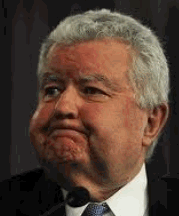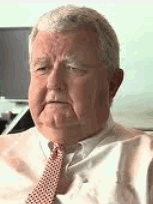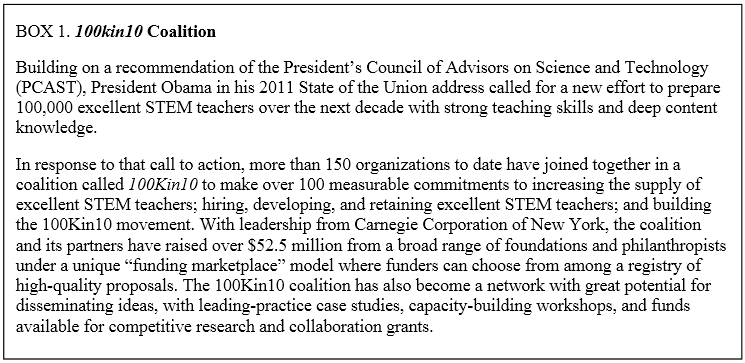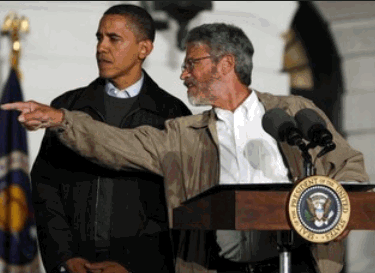
The Chief Scientist

Ian Chubb
|
Editorial
- 01 July 2013 |
|
The Chief Scientist
|
An Apparently Exasperated Chief Scientist Spits the Dummy |
Ian Chubb |
When astronomer Penny Sackett resigned from her position of Australia's Chief Scientist -- clearly frustrated with her inability to significantly influence governmental policy with regard to adequate support for science, technology, engineering and mathematics (STEM) in Australia -- the then Minister for Innovation, Industry, Science and Research, Kim Carr*, invited the newly retired vice chancellor of the Australian National University, Ian Chubb, to take on the job as of May 23, 2011, i.e. just over 2-years ago.
In comments by Professor Chubb, reported last week by The Australian's Andrew Trounson, the chief scientist indicated he believed that the "social compact" between researchers and the public (he meant the tax payer) was "falling apart" and went on to say: "The complacency, or notion of entitlement, is something that I think percolates through a lot of what we [scientists?] do. We don't make some of the tougher decisions we might have to make about actually earning our place, rather than just thinking something will be just be given to us."
The business sector also got a serve from Professor Chubb this past Wednesday when he told a conference: "that of those businesses investing in research only 4 per cent are actually researching new innovations for export markets. That was despite the government spending $13.5 billion on R&D tax breaks over the last decade to encourage new export industries beyond mining."
And as for our political masters, he decried the fact that government spending on research of around $9 billion for 2012-13 is spread across 79 funding programs and 14 portfolios with no over-arching strategy guiding it: "We can't do everything, and we are trying too hard to do everything," he told a conference in Melbourne. "What we have tended to do in this country is break things down into small bundles and I think psychologically we have become risk averse. We minimise it by breaking programs down into small bits so if one goes bung the embarrassment will be limited and confined to just one or two people."
Although Professor Chubb has been in the job some 25 months, and we were told that he knew how to tread usefully the corridors of Parliament, he has in truth been no more effective in improving the government's, or the private sector's, support for mathematics, and science than was his immediate predecessor -- shuffling funding from one account in the portfolio to another is more a party trick than a sign of increased support.
Now it just might be possible if the Chief Scientist enlisted, our sports and entertainment luminaries to spruik STEM rather than berating all and sundry, to get the parliamentarians, the populace, and perhaps even prime ministers and would-be prime ministers, to listen, and to take on the sort of support US President Barack Obama noted when this past April he addressed the US National Academy of Sciences.
|
We want to make sure that we are exciting young people around math and science and technology and computer science. We don’t want our kids just to be consumers of the amazing things that science generates; we want them to be producers as well. And we want to make sure that those who historically have not participated in the sciences as robustly — girls, members of minority groups here in this country — that they are encouraged as well. We’ve got to make sure that we’re training great calculus and biology teachers, and encouraging students to keep up with their physics and chemistry classes.... It means teaching proper research methods and encouraging young people to challenge accepted knowledge. |
And then in the following month Mr Obama submitted to the US Congress the President's National Science and Technology Council report: Federal Science, Technology, Engineering, and Mathematics (STEM) Education 5-Year Strategic Plan - A Report from the Committee on STEM Education, National Science and Technology Council.
It included the following box:

And in his accompanying "letter" to the Congress John
Holdren, the Assistant to the President for Science & Technology and Director,
Office of Science and Technology Policy, wrote in part::
Setting ambitious but achievable goals and
challenging the private sector President Obama announced the
goal to prepare 100,000 excellent STEM teachers over the next decade in his 2011
State of the Union Address. Answering this call to action, over 150
organizations led by the Carnegie Corporation of New York formed a coalition
called 100Kin10. Members of the coalition have made over 150 commitments to
support STEM-teacher preparation and have raised over $30 million for this
effort. In mid-March, the Howard Hughes Medical Institute announced a $22.5M
investment to support expansion of the successful UTeach program in support of
this goal.
Additional examples of this all-hands-on-deck approach to challenging companies,
foundations, non-profits, universities, and skilled volunteers include Change
the Equation, US2020, and the scaling up and expanding an AP program for
children in military families.
Not until the Australia's Chief Scientist resides within the Department of the Prime Minister and Cabinet and becomes in fact the Chief Scientific Advisor for the Prime Minister and Cabinet will mathematics, science, technology and engineering become elevated from being tolerated to being proactively supported.
______________________________________
*Senator Kim Carr was reinstated this morning by Prime Minister Kevin Rudd as the Minister for Innovation, Industry, Science and Research, and as a bonus Minister for Higher Education, while Bill Shorten has been designated the Minister for Education as well as Workplace Relations.
Alex Reisner